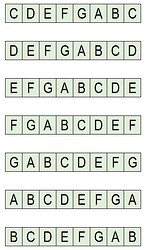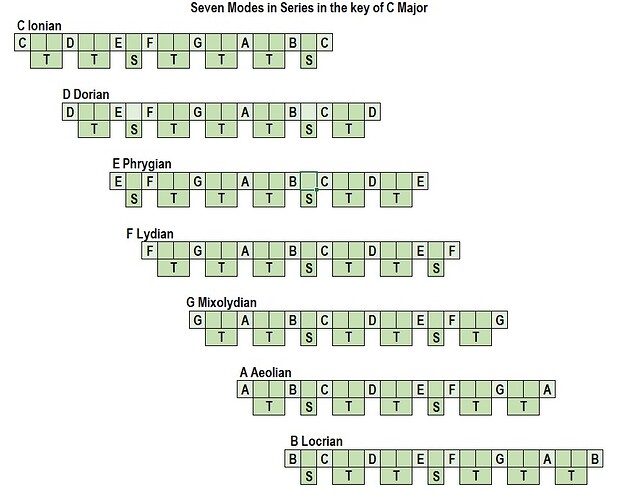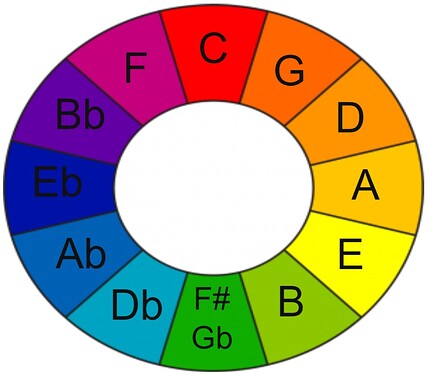Modes Part 1 - An introduction, an adventure, an exploration.
What are modes?
Some scary, musical dark-alley that smug musos entice unwary wannabees down only to mug them and steal their shiny-shiny?
Elaborate traps to snarl the fingers of unsuspecting guitarists and hurt still-developing confidence?
Some fiendish device designed to provoke any sane person to yell ‘I don’t get it! I can’t do it!’ and throw down their guitar?
Hopefully not.
If you have ever played a simple chord progression then you have probably been immersing yourself in the sound of something modal.
If you have ever noodled around on a seven-note (most likely major) scale, then you have certainly been doing something modal.
Because modes are not some way-out-there mystery, unfathomable and unknowable.
They are simply seven-note scales.
That’s it.
Just scales, used to make music.
Not only that, being scales, they can and do give rise to triads and chords and chord progressions too. They have a melodic (single note melodies) and a harmonic (chordal movement) nature. Just like the major scale. In fact, the major scale is a mode.
Ain’t that a kick in the head!
Let’s start this adventure, this exploration, with that basic idea.
Modes are scales, collections of sounds, intervallic sequences of musical notes.
The Major scale is one such mode. In modal naming systems it is called Ionian. And this is a first hurdle to tackle head on as it need not be an obstacle to understanding at all.
That word – Ionian.
It is just a name.
Nothing more.
If it better suits your way of trying to learn, we could reassign our terms of reference and refer to it using an adjective instead. Major as a description, an adjective.
The major scale – the huge, big, great, enormous, ubiquitous, magnificent scale … something fundamentally m-a-j-o-r.








